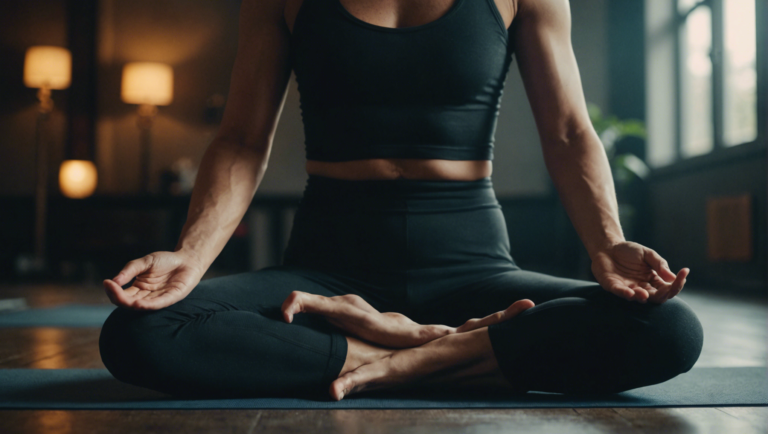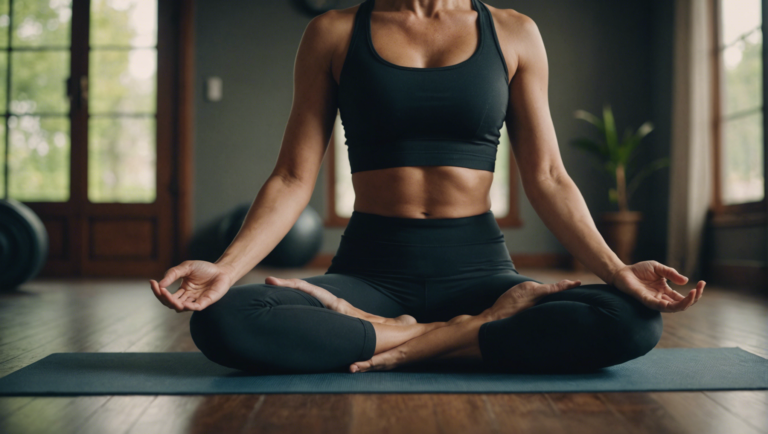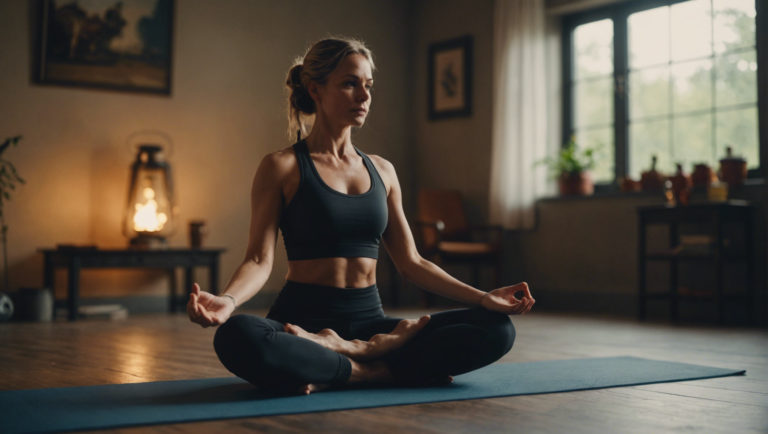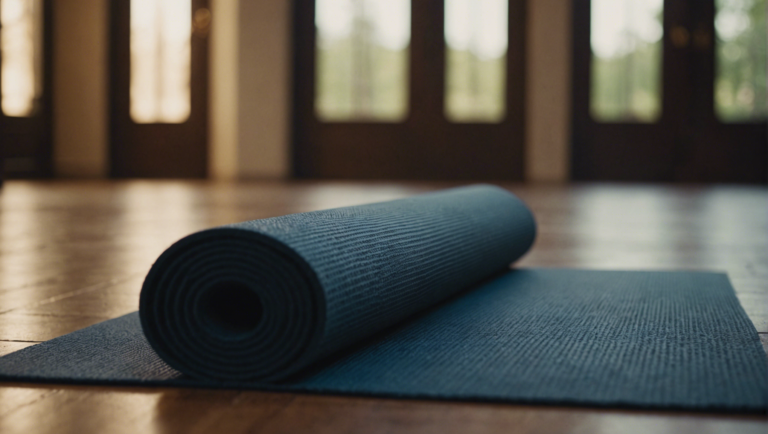Exploring The Benefits: Can Yoga Help Alleviate Arthritis Symptoms?
The Connection Between Yoga and Arthritis Symptom Relief
When discussing the management of arthritis, a holistic approach that encompasses both the physical and mental well-being of the individual often yields the most beneficial outcomes. Within this broad spectrum of therapeutic options, one ancient practice stands out for its gentle yet effective approach to alleviating arthritis symptoms: yoga. Delving into the nuanced connections between yoga and arthritis symptom relief reveals a multifaceted therapy that can significantly enhance the quality of life for those suffering from this chronic condition.
Bridging the Gap between Mind and Body
Yoga, with its roots deeply embedded in ancient Indian philosophy, is a disciplined method for attaining a goal that includes breath control, simple meditation, and the adoption of specific bodily postures. It’s widely practiced for health and relaxation purposes. The underlying principle of yoga—that the mind and body are intrinsically connected—resonates strongly with those experiencing arthritis. This condition, characterized by joint pain, swelling, and stiffness, is not limited to physical discomfort; it often carries emotional and psychological burdens as well. Through yoga’s meditative and physical practices, individuals find a unique avenue for managing both the physical symptoms of arthritis and the stress and anxiety that accompany chronic pain.
The Healing Power of Gentle Movement
One might wonder how the physical act of yoga, which involves various postures and movements, benefits those with joint pain and stiffness. The key lies in the gentle, low-impact nature of yoga exercises, which can be adapted to suit individuals’ specific needs and limitations. Yoga promotes flexibility, strengthens muscles surrounding the joints, and enhances blood circulation, which in turn can reduce arthritis-related pain and improve joint function. Importantly, these benefits are achieved without placing undue stress on vulnerable joints, making yoga a safe option for arthritis management.
Breath Control: A Pathway to Reduced Inflammation
Beyond its physical manifestations, yoga’s practices of deep, mindful breathing (pranayama) have been shown to have a profound impact on reducing inflammation, a key component of arthritis. This comes down to the body’s stress response; chronic stress can exacerbate inflammation and thus worsen arthritis symptoms. Breath control exercises help in modulating the stress response, promoting relaxation, and consequently mitigating the inflammatory processes associated with arthritis.
Nurturing Resilience through Meditation and Mindfulness
Incorporated within yoga is the practice of meditation and mindfulness, which trains individuals to focus their mind on the present moment, acknowledging and accepting their condition without judgment. This mental component is crucial for those dealing with chronic conditions like arthritis. By fostering a positive mindset and reducing negative emotional responses to pain, yoga can enhance coping strategies, making individuals more resilient in the face of their condition’s challenges.
Embracing Yoga: Practical Considerations
For those intrigued by the potential benefits of yoga for arthritis symptom relief, starting safely is paramount. It’s advisable to seek classes or instructors experienced in working with arthritis patients or, at the very least, to begin with gentle, beginner-level practices. Listening to one’s body is critical; yoga should never cause pain or discomfort. With these precautions in mind, incorporating yoga into the management of arthritis can be a rewarding endeavor that supports both physical health and mental well-being.
Moving Forward with An Ancient Solution
The connection between yoga and the alleviation of arthritis symptoms is evident in the countless individuals who have experienced its benefits firsthand. As a practice that seamlessly integrates the improvement of physical health with mental and emotional resilience, yoga offers a comprehensive approach for those seeking relief from the multifaceted challenges of arthritis. It stands as a testament to the power of holistic health practices, underscoring the idea that treating the body and mind as a unified whole can unlock paths to healing that go beyond conventional medicine. In embracing yoga, individuals with arthritis can find not only symptom relief but also a deeper sense of peace and well-being.
Scientific Backing: Research on Yoga’s Impact on Arthritis
The intersection of traditional practices like yoga with modern medical research offers a fascinating glance into the ways ancient solutions can complement contemporary health treatments. Specifically, the examination of yoga’s effectiveness in mitigating the symptoms of arthritis has gathered considerable interest within the scientific community. This article delves into the research conducted on yoga’s impact on arthritis, aiming to provide a comprehensive overview of how this age-old practice stands up under the scrutiny of modern science.
The Science Behind Yoga and Joint Health
A growing body of research suggests that yoga, known for its gentle postures, deep breathing, and mindfulness techniques, may offer significant benefits for individuals struggling with arthritis. Arthritis, a term that encompasses a range of joint disorders characterized by inflammation, can lead to chronic pain, stiffness, and decreased range of motion. The low-impact nature of yoga makes it an appealing option for arthritis sufferers, particularly those seeking methods to manage pain and improve functionality without exacerbating their symptoms.
Several studies have pointed to yoga’s efficacy in increasing flexibility, improving joint health, and reducing pain. A study published in the Journal of Rheumatology found that participants with osteoarthritis who engaged in a regular yoga routine experienced a reduction in joint pain and stiffness, along with an improvement in physical function. Furthermore, the mindfulness aspect of yoga has been shown to aid in stress reduction, which can be particularly beneficial for individuals with arthritis, given the link between stress and inflammation.
Analyzing the Impact on Different Types of Arthritis
Arthritis is not a one-size-fits-all condition; it has many types, including osteoarthritis (OA), rheumatoid arthritis (RA), and psoriatic arthritis (PsA), each with different causes and treatment strategies. Research indicates that yoga’s effectiveness can vary across these types, with specific yoga postures and practices potentially offering targeted benefits.
For instance, individuals with RA, an autoimmune condition, may find that yoga not only helps in managing physical symptoms but also in coping with the emotional challenges of living with a chronic condition. A systematic review in the Clinical Journal of Pain highlighted yoga’s positive effects on improving the quality of life for people with RA, underscoring the holistic benefits of incorporating yoga into treatment plans.
Evidence-Based Practice and Patient Safety
While the evidence points to yoga’s potential advantages for arthritis patients, experts emphasize the importance of evidence-based practice and patient safety. Tailoring yoga practices to individual needs and limitations is crucial, particularly given the varying severities and types of arthritis. Qualified yoga instructors, preferably with experience in therapeutic yoga or working with patients with chronic conditions, are vital in ensuring that the practice is beneficial and not detrimental.
Healthcare professionals often recommend starting with gentle yoga forms, such as Hatha or Iyengar, which focus on slow movements and provide ample support for the body. Additionally, incorporating yoga as part of a comprehensive treatment plan, under the guidance of healthcare providers, ensures that individuals receive coordinated care that addresses all aspects of their arthritis.
The Future of Yoga in Arthritis Management
As research continues to evolve, the future of yoga in arthritis management looks promising. The integration of yoga into holistic health recommendations signifies a shift towards more inclusive, patient-centered care models that acknowledge the value of traditional practices. Ongoing studies and clinical trials will further clarify yoga’s role and refine guidelines for its application, potentially leading to more personalized and effective arthritis management strategies.
Arthritis sufferers and healthcare providers alike are increasingly recognizing yoga’s potential to complement traditional medical treatments, offering a holistic approach to managing the condition. With its emphasis on mindfulness, gentle movement, and breath control, yoga provides a therapeutic option that addresses the physical, emotional, and psychological aspects of arthritis, embodying the essence of integrative healthcare.
Gentle Yoga Poses Tailored for Arthritis Patients
Living with arthritis can be significantly challenging, affecting millions worldwide by causing pain, stiffness, and reduced mobility. Yet, amidst the widespread search for relief and management strategies, yoga emerges as a promising ally. This ancient practice, known for its holistic benefits to both mind and body, offers gentle poses tailored specifically for those battling arthritis. Through careful adaptation and focus, yoga becomes not just a form of exercise but a therapeutic tool, capable of improving the quality of life for arthritis patients.
Tailored Yoga Poses for Enhanced Mobility and Relief
Yoga, in its essence, is an adaptable practice, making it ideal for people with varying health concerns, including arthritis. The key lies in selecting poses that encourage movement without strain, promoting flexibility, and enhancing joint mobility. Gentle yoga poses can significantly alleviate symptoms of arthritis by reducing joint pain and stiffness while increasing range of motion.
Mindful Movement to Nourish Joint Health
The beauty of yoga lies in its emphasis on mindful movement and breath control. For individuals with arthritis, this approach encourages a deeper connection with their bodies, allowing for movements that are both healing and respectful of their limits. By focusing on slow, deliberate actions, they can achieve a balance between stretching and strengthening without exacerbating their symptoms.
Strengthening Poses Adapted for Safety
Strength is crucial for supporting arthritic joints, but traditional exercises might not always be feasible. Yoga offers a solution through poses that have been adapted to build strength safely. Poses such as the chair-supported Warrior or seated Tree Pose enable individuals to enjoy the muscle-strengthening benefits of yoga without the risk of injury.
Flexibility and Range of Motion through Gentle Stretches
Flexibility often diminishes with arthritis, leading to a vicious cycle of pain and decreased mobility. Yoga addresses this by incorporating gentle stretches that are designed to gradually increase the range of motion. These stretches, performed with the aid of props like straps and blocks, ensure that each movement is accessible and beneficial, regardless of one’s flexibility level.
Breathwork and Relaxation for Stress Reduction
The practice of yoga is not solely physical; it integrates breathwork and relaxation techniques that play a crucial role in managing arthritis. Stress is known to aggravate arthritis symptoms, making the calming effects of yoga especially valuable. Techniques such as diaphragmatic breathing and guided relaxation can help mitigate stress, thereby potentially reducing inflammation and pain associated with arthritis.
Creating a Personalized Yoga Routine
Embarking on a yoga journey requires a thoughtful approach, especially for those with arthritis. It’s essential to start with guidance from a yoga instructor experienced in working with arthritis patients. This ensures that every pose is adapted to meet individual needs and limitations. Furthermore, a personalized yoga routine allows individuals to progress at their own pace, gradually building strength and flexibility while minimizing the risk of injury.
Engaging Body and Mind for Holistic Health
What sets yoga apart as a therapeutic practice for arthritis is its holistic approach. By engaging both body and mind, it offers a multifaceted approach to symptom management. The physical benefits, coupled with the mental and emotional support provided by yoga, contribute to an overall sense of well-being, underscoring its value as part of a comprehensive arthritis management plan.
Yoga, with its gentle poses and mindful approach, holds promise for those seeking to alleviate the symptoms of arthritis. By tailoring the practice to the unique needs of arthritis patients, it can offer a safe, effective, and holistic means of improving physical function and enhancing quality of life. As always, it’s advisable to consult with healthcare providers before starting any new exercise regimen, ensuring that yoga is a suitable option for individual health circumstances.
Integrating Yoga into Your Arthritis Management Plan
Living with arthritis involves managing pain and working to maintain as much flexibility and mobility as possible. Traditional treatments often include medication, physical therapy, and, in some cases, surgery. However, many are now looking towards more holistic approaches to complement these methods. Yoga, with its gentle stretches and focus on mindfulness, presents a promising option for those seeking to ease the discomfort associated with arthritis. This article dives deep into how adopting a yoga practice can be a beneficial adjunct to your arthritis management plan.
Understanding the Benefits of Yoga for Arthritis
Yoga offers a unique combination of physical movement, breath control, and mental focus. These elements work together to provide a multifaceted benefit for individuals with arthritis. Firstly, the physical postures, or asanas, are designed to strengthen muscles, increase flexibility, and improve joint mobility. For someone with arthritis, these gentle stretches can help reduce the stiffness and pain in joints by maintaining muscle tone and promoting circulation.
Moreover, yoga emphasizes breathing and mindfulness, which can play a significant role in pain management. The practice of focusing on the breath helps in calming the mind and reducing stress. This mental relaxation can lead to a decrease in the body’s stress response, which often exacerbates arthritis symptoms. Additionally, the mindfulness aspect of yoga encourages practitioners to pay attention to their bodies, helping them recognize and respect their limits. This self-awareness can prevent overexertion and the potential exacerbation of symptoms.
Selecting the Right Yoga Style
When considering yoga as part of an arthritis management strategy, selecting the appropriate style is crucial. Not all yoga is created equal, and some styles may be more suited to those with arthritis than others. Gentle yoga forms such as Hatha, Iyengar, and Restorative Yoga are often recommended. These styles focus on slow movements, controlled stretches, and the use of props to ensure alignment and support. They allow for modifications that can accommodate limited mobility or pain.
It’s important to consult with a healthcare provider before starting any new exercise regimen. Additionally, seeking out a qualified yoga instructor who has experience working with arthritis patients can provide guidance on how to modify poses and use props effectively to prevent strain on the joints.
Building a Routine and Setting Goals
Starting a yoga practice can seem daunting, especially for those who are new to the exercise or have limitations due to arthritis. However, the beauty of yoga lies in its adaptability. Begin with short sessions, perhaps 10 to 15 minutes long, and gradually increase the duration as strength and flexibility improve. Setting realistic goals, such as attending a yoga class twice a week or incorporating a daily gentle stretching routine at home, can provide a sense of achievement and motivate further practice.
In establishing a yoga routine, consistency is key. Consistent practice yields better results, both in terms of physical benefits and stress reduction. It’s also essential to listen to your body and avoid pushing into painful movements. Yoga is not about achieving the perfect pose but rather about finding balance and harmony within one’s own capabilities.
Final Thoughts
Yoga offers a holistic approach to managing arthritis, addressing not just the physical symptoms but also the mental and emotional aspects. With its capacity to reduce pain, improve mobility, and decrease stress, yoga can be a valuable tool in the arsenal against arthritis. However, it’s important to approach this practice with patience and an open mind, allowing the body to gradually adapt and reap the myriad benefits yoga has to offer.
Engaging in a yoga practice, with appropriate modifications and under the guidance of professionals, can lead to improved well-being for those living with arthritis. By incorporating mindful physical activity into one’s management plan, individuals with arthritis can find relief and a greater sense of control over their condition.
Testimonials and Success Stories: Real-Life Yoga Journeys
Yoga, an ancient practice with roots stretching back thousands of years in India, has surged in global popularity as a holistic approach to wellness. Its benefits span physical, emotional, and mental health improvements, making it a versatile tool for diverse individuals. Among these are real-life stories of transformation and healing, stories that not only inspire but also provide tangible proof of yoga’s profound impact on lives. Delving into these narratives, we find compelling evidence of how yoga has become a vessel for change, aiding in physical recovery, mental clarity, and emotional balance.
Transformative Effects of Yoga on Physical Health
People from all walks of life turn to yoga as a gentle yet effective form of physical exercise that can be adapted to suit various fitness levels and health conditions. Success stories often highlight significant improvements in flexibility, strength, and bodily awareness. For instance, individuals suffering from chronic pain have found relief through consistent yoga practice, attributing their improved condition to the gentle stretching and strengthening poses that characterize most yoga routines.
Moreover, yoga’s emphasis on mindful movement and breath control has been a game-changer for those battling lifestyle diseases such as hypertension and diabetes. Regular practitioners report better blood pressure control, reduced stress levels, and, in some cases, even a reversal of diabetes symptoms. These anecdotes underscore yoga’s capacity from merely a form of exercise to a life-enhancing, and sometimes life-saving, practice.
Emotional Wellbeing Fostered Through Yoga
Beyond the physical realm, yoga’s impact on emotional health is equally profound. The practice of yoga encompasses more than just the physical postures (asanas); it includes pranayama (breathing techniques) and meditation, both of which are powerful tools for mental and emotional wellbeing. Success stories often touch on the remarkable improvements in stress management, anxiety reduction, and overall mood enhancement credited to regular yoga practice.
Individuals who have felt the weight of depression or the agitation of anxiety have found solace and stability through yoga. By learning to anchor their attention on the breath and being present in each moment, practitioners develop resilience against life’s ups and downs. These personal accounts are a testament to yoga’s ability to nurture a balanced state of mind, contributing to more harmonious and fulfilling life experiences.
Spiritual Growth and Self-Discovery
Perhaps the most transformative aspect of yoga is its capacity to guide individuals on a journey of spiritual growth and self-discovery. Yoga transcends physical exercise; it is a path toward understanding the self and the interconnectedness of all life. Many attribute their yoga practice as a pivotal factor in leading a more conscious, compassionate, and contented life.
Success stories in this realm often describe profound experiences of connection, clarity, and the cultivation of an inner peace that persists beyond the yoga mat. Practitioners speak of yoga as a reflective mirror, revealing insights into their true nature and fostering a deep sense of gratitude and acceptance.
The Community Aspect of Yoga
The communal experience of yoga also plays a significant role in its transformative power. Joining a yoga class or community offers a sense of belonging and support that can be particularly healing. Success stories frequently highlight how the encouragement and understanding within these communities have been instrumental in personal growth and healing journeys. The shared experience of yoga fosters a unique bond among practitioners, uniting them in their pursuit of wellness and self-discovery.
Yoga’s multidimensional approach to wellness — encompassing physical, emotional, spiritual, and communal aspects — makes it a potent tool for transformation. The testimonials and success stories of those who have embarked on yoga journeys serve as compelling evidence of its remarkable benefits. These narratives not only inspire but also offer hope and a pathway for others seeking healing and fulfillment. Through these real-life yoga journeys, the timeless wisdom and universal applicability of yoga shine brightly, heralding its place as a key modality for holistic health and wellbeing.
Conclusion
Understanding the intertwined relationship between yoga and the alleviation of arthritis symptoms, we delve into a holistic approach that promises a blend of physical ease and mental peace. The exploration begins with unraveling how yoga serves not just as a physical practice but a therapeutic endeavor that addresses the stiffness, pain, and reduced mobility often associated with arthritis. Through a combination of stretching, strengthening, and stabilizing, yoga offers a gentle yet effective means to soothe inflamed joints and enhance overall bodily function.
The legitimacy of yoga as a complementary treatment for arthritis is further cemented by scientific research. Numerous studies present compelling evidence that a regular yoga routine can significantly diminish the discomfort associated with arthritis, improving quality of life and potentially reducing the reliance on medication. This scientific backing not only elevates yoga from mere anecdotal success to evidence-based practice but also encourages medical professionals to consider it a viable recommendation for their patients.
For those living with arthritis, the thought of engaging in any form of exercise can be daunting, fearing it might exacerbate their symptoms. However, the beauty of yoga lies in its adaptability and inclusivity, offering gentle yoga poses that are specifically tailored to cater to the needs and limitations of arthritis patients. These poses focus on gentle stretching and muscle strengthening without putting undue stress on sensitive joints. By honing in on flexibility, balance, and strength, yoga creates a foundation that supports arthritis management and aims to restore a range of motion.
Yoga into an arthritis management plan can be transformative. It is not just about selecting the right poses but creating a balanced routine that aligns with individual health goals and physical capabilities. This integration calls for a mindful approach, where listening to one’s body becomes paramount. Starting slow, emphasizing proper alignment, and gradually increasing intensity ensures that yoga remains a source of relief, not discomfort. The incorporation of yoga into daily life speaks to a larger narrative of adopting lifestyle changes that champion joint health and personal well-being.
Central to the narrative of yoga’s efficacy are the heartfelt testimonials and success stories that people share. Real-life yoga journeys of individuals who have battled with arthritis and found solace and improvement through yoga are both inspiring and instructive. These personal accounts not only bear witness to the transformative power of yoga but also serve as a beacon of hope for others grappling with similar challenges. They underscore the potential of yoga to transcend its role as a mere physical activity, becoming a conduit for healing and empowerment.
The journey through understanding how yoga can ameliorate the symptoms of arthritis brings us to a comprehensive appreciation of its potential. From the solid foundations laid by scientific research to the adaptability of poses catering to arthritic needs, and the inspiring stories of individuals who have witnessed profound changes in their condition, yoga emerges as a formidable ally in the fight against arthritis.
Integrating yoga into an arthritis management plan transcends the practice of exercise; it is a philosophy that embraces holistic wellness, advocating for a synergy between mind, body, and spirit. The gentle, restorative nature of yoga, backed by scientific research and enriched by real-life success stories, makes it an invaluable component of a comprehensive approach to managing arthritis. It beckons to those affected to explore its potential, promising not only physical relief but also a pathway to enhanced well-being and a life enriched with greater mobility and peace.
As we navigate the complexities of managing chronic conditions like arthritis, yoga stands out as a beacon of hope and healing. It is a testament to the power of holistic, integrated approaches to health and wellness, encouraging individuals to explore their full potential for healing, resilience, and renewal.



